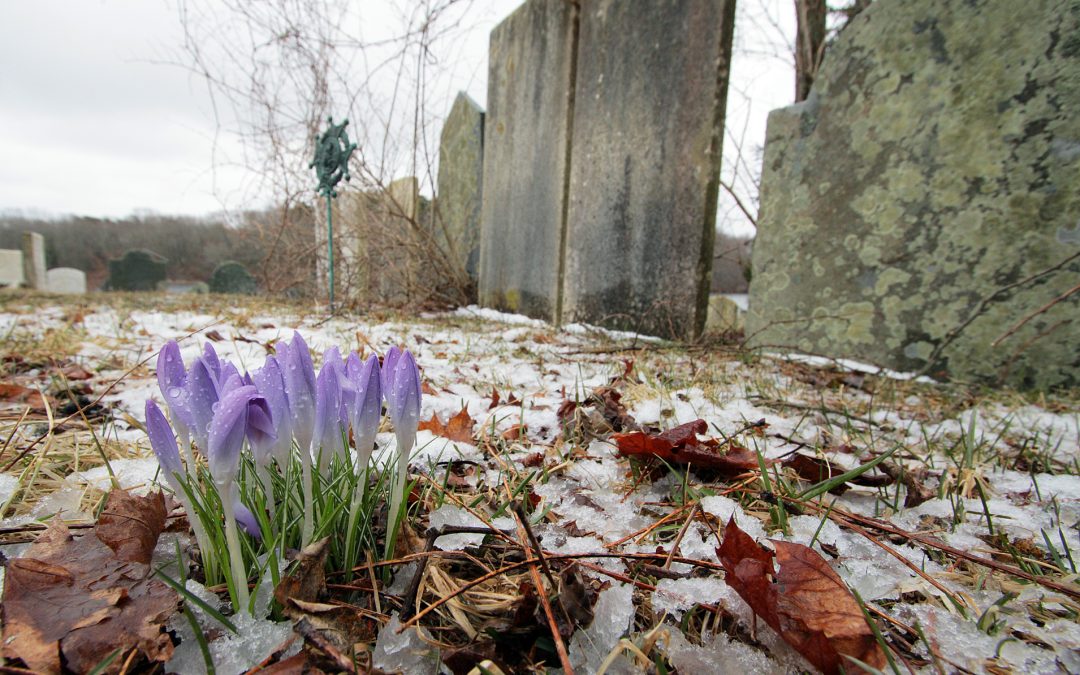By MARA BROOKS
Photograph by Gene M. Marchand
“Last year, we had a really mild December,” recalled Russell Norton, horticulturist at Heritage Museum & Gardens.
“It was so mild that some plant species thought it was spring, so they bloomed.”
Most Cape Cod gardeners know what happened next. By Valentines Day winter had returned with a vengeance, plying confused perennials with sub-freezing temperatures and killing off their newly sprouted buds.
“My hydrangeas have been knocked out for three years in a row from cold temperature injury,” Norton lamented.
According to the “Farmer’s Almanac,” warm Decembers won’t be an issue for New England this winter. But—courtesy of La Niña—lower than normal temperatures will be. That could spell trouble for marginally hardy plant species not built to withstand prolonged winter frosts.
“We’re always trying to push the boundaries of what we can grow on the Cape,” Norton said.
“I’m seeing more and more crepemyrtle, which isn’t very hardy here, as well as sweet gum, which isn’t native [to the Cape].”
Here are a few ways to tip the odds in your plants’ favor this winter:
Know Your Hardiness Zone And The Microclimates Of Your Backyard
Weather is predictably unpredictable, and even plants suited for their growing zone can be at risk. But you can lower that risk by assessing the microclimates of your yard and by planting accordingly.
“The south side of your yard will have full sun even in the winter,” Terry Soars of Soars Flower Garden Nursery said.
“So even a zone 8 plant might be okay If you plant it on the south side against masonry: a chimney, or a stone or brick wall. But you’ll want to plant only the hardiest plants on the north side,” she cautioned.
Levels of sun exposure, shade, elevation, and drainage can also affect your plant, for better or worse.
Protecting Your Plants In A Cold Snap
The greatest threat of frost is usually after sundown and before dawn, when temperatures drop low enough to freeze the moisture on plant leaves and buds.
If a cold snap is forecast in your area, you can help prevent frost damage by covering your shrubs, trees and larger plants with bed sheets, blankets, burlap, or commercial frost cloths. Just remember to remove the cover in the morning, when the sun comes out and temperatures rise.
Smaller plants can be brought inside, or covered with an upside-down bucket or with a layer of mulch.
Mulch insulates plants and evens out soil temperatures (which can sometimes drop even a few degrees lower than the air above it). Apply at least two to three inches of mulch to help protect plant roots from frost. Mulch can be made of almost anything; from shredded bark to compost manure to newspaper clippings to hay. But organic mulch not only insulates and protects your plants, it can improve soil fertility by providing extra nutrients.
Don’t Succumb To ‘Garden Grief’
Despite your best efforts, you mIGHT not be able to save every plant in your garden. But don’t fret: most perennials, trees and shrubs can recover from a late spring freeze even if they appear to be damaged. Their blooms and fruit may be lost for the year, but chances are you’ll soon cut away the dead leaves and branches to reveal healthy, new wood and the promise of a glorious spring.
Next year, that is.
“The cape is Zones 6 and 7, so if you pick a plant from zones 7, 6, 5, or 4—it’s almost guaranteed to come back [after suffering damage],” Soars saID reassuringly.
But if you’re worried about unseasonable winter temperatures, whether warm or cold, Norton advises to “choose plants that bloom on new wood tissue,”
“Those plants have the best chance of blooming in the Spring, even in warm winter situations,” he said.
“Gardening is always a little bit of a gamble,” Soars said philosophically.
“We might try to push the envelope, but Mother Nature is boss.”

